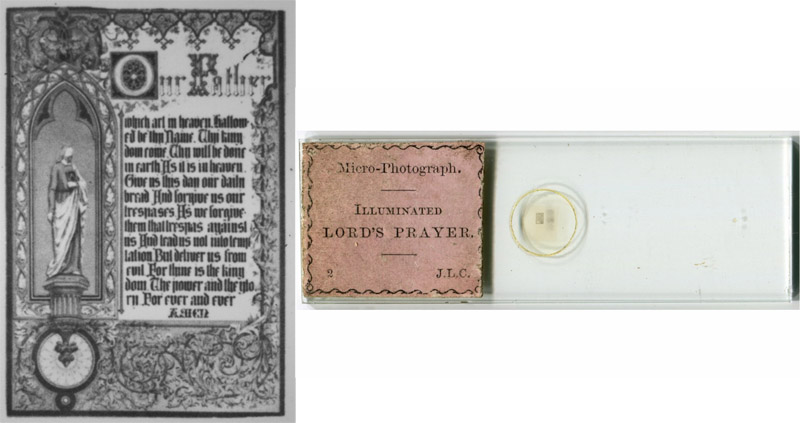
Joseph Louis Casartelli, 1823 – 1900
microphotograph slide-maker “J.L.C.”
by Brian Stevenson
last updated September, 2021
At the age of 11, Guiseppe Luigi Casartelli emigrated from Italy to Liverpool, England, joining a relative’s barometer and thermometer-making business. Upon arrival, he anglicized his name to Joseph Louis Casartelli. He later moved to Manchester and established himself as an innovative producer of mechanical and optical equipment. Around 1850, Casartelli expanded his products to include microscopes, telescopes, cameras and other optical devices. He also operated a photographic studio when in Manchester. By the 1870s-80s, his products were primarily focused on supplying the heavy industries of Manchester, such as valves and other fittings for steam engines, mining equipment, and magnifiers for quality control in the fabric-making mills.
Microscopes, telescopes and other equipment signed by Joseph L. Casartelli are found with some frequency at auctions and in collections. The workmanship of such instruments is generally good but not particularly innovative, and patterns often resemble those of other manufacturers. Considering Casartelli’s training in glasswork, it is likely that he manufactured the lenses, but brought in the brasswork from other makers.
Casartelli stated that he made many microphotographs during the late 1850s to early 1860s. For the most part, producers of microphotograph slides marked their productions only with their initials. The labels of John B. Dancer’s microphotographs identify him as only “J.B.D.”, those of Alfred Reeves as “A.R.”, and so on. Another, previously unidentified Victorian-era person produced microphotographs with pink paper labels and the initials “J.L.C.” Casartelli’s initials and address, combined with his published statements and his manufacture and retail of microscopes, cameras and related equipment, indicate that J.L. Casartelli produced the microphotograph slides labeled “J.L.C.”.

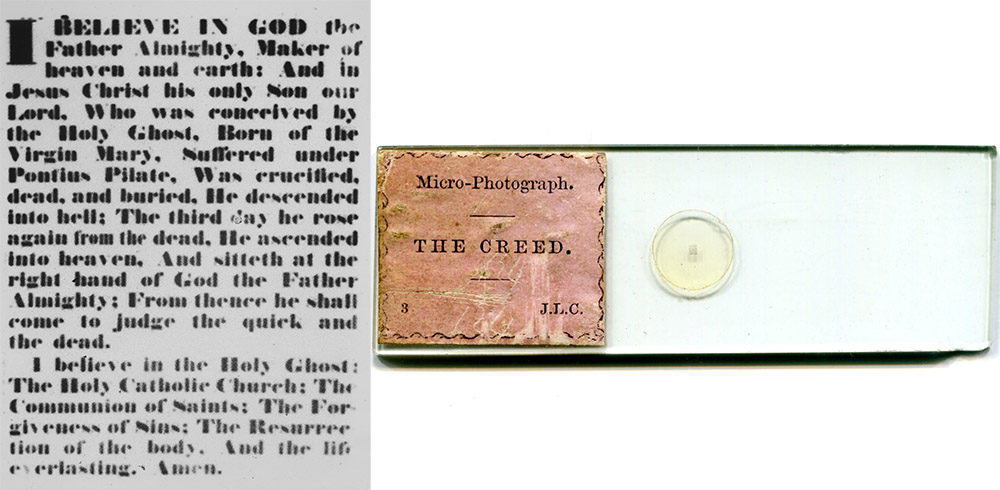
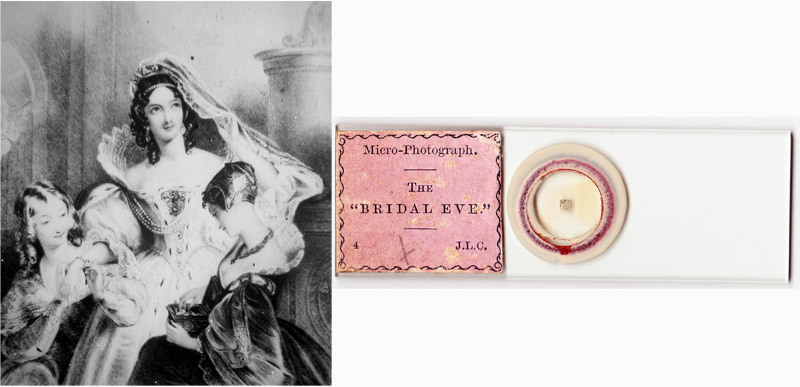
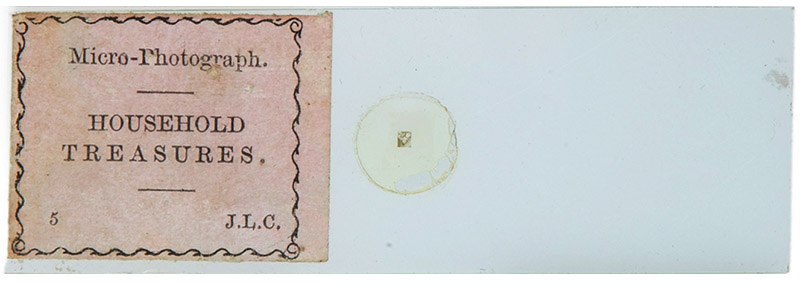
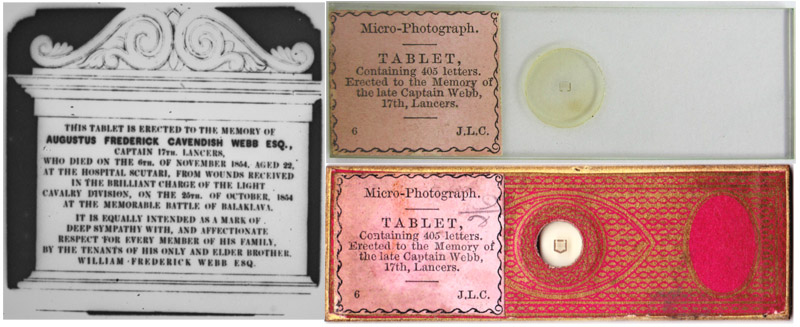
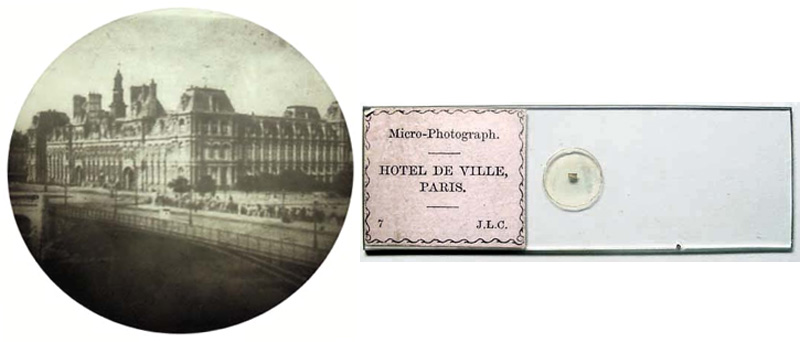
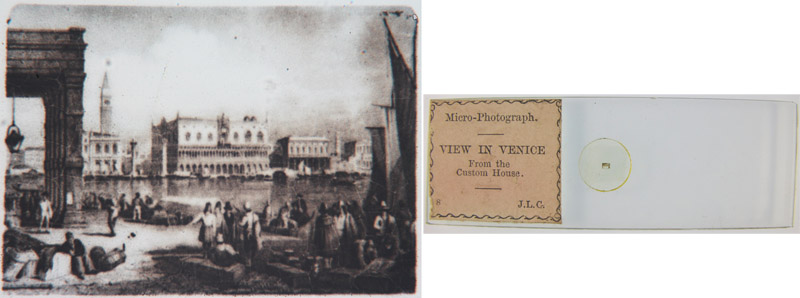
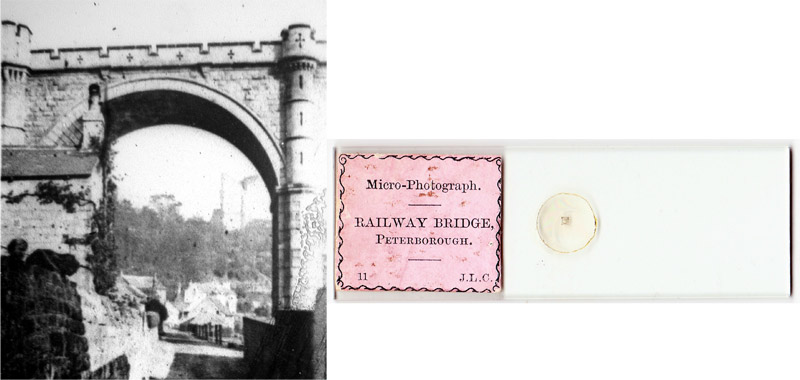
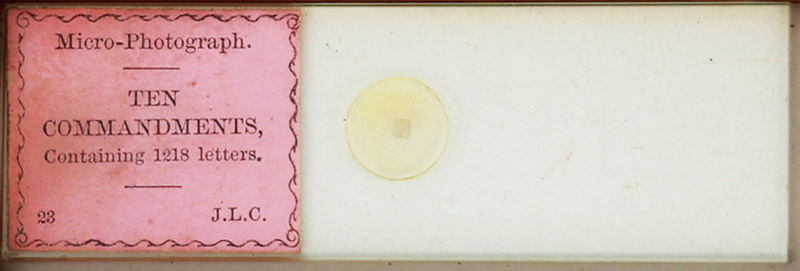
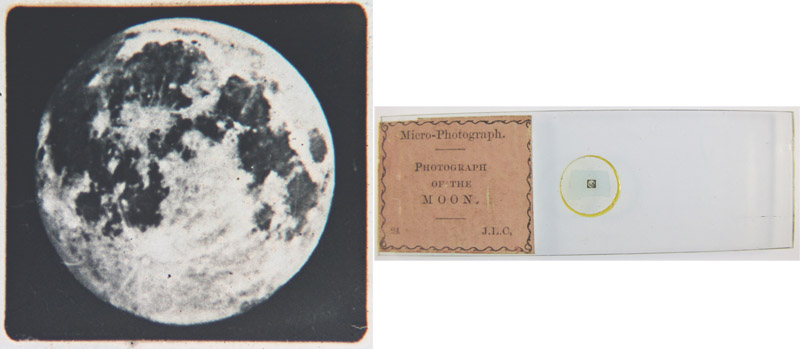

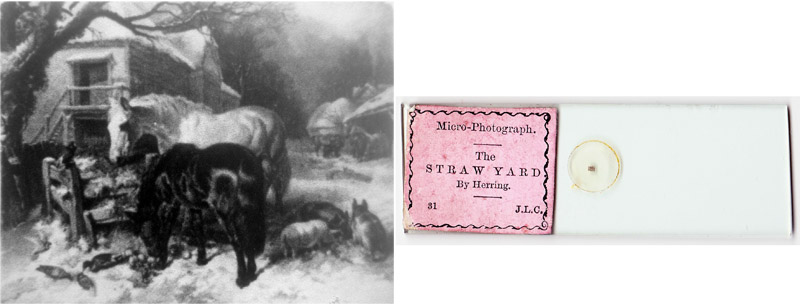

Figure 1.
Microphotographs produced by “J.L.C.” Information described in this
essay supports the conclusion that these were produced in the late 1850s to
early 1860s by J.L. Casartelli. The lower example, of a five pound note, is not numbered, suggesting that it may be a very early Casartelli production. If readers have additional examples that they would like to share, I will be happy to post them here. Some images were adapted for nonprofit, educational purposes from internet auction sites.
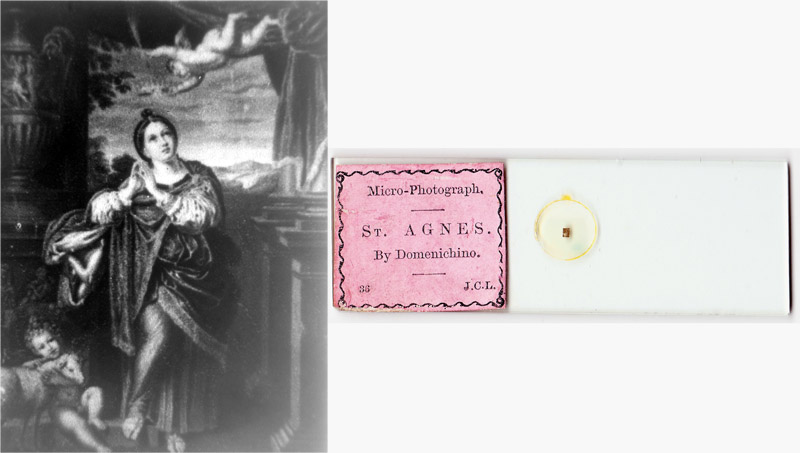
Figure 1B.
A very rare microphotograph, labeled “J.C.L.”. The extensive similarities with J.L.C. microphotograph slides indicate that the labeling is a typographical error.
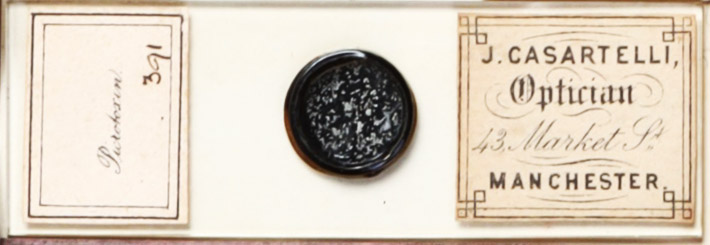
Figure 2.
A conventional microscope slide that was retailed by J.L. Casartelli. The type-set specimen label resembles those used by professional slide-maker J.T. Norman and his sons.
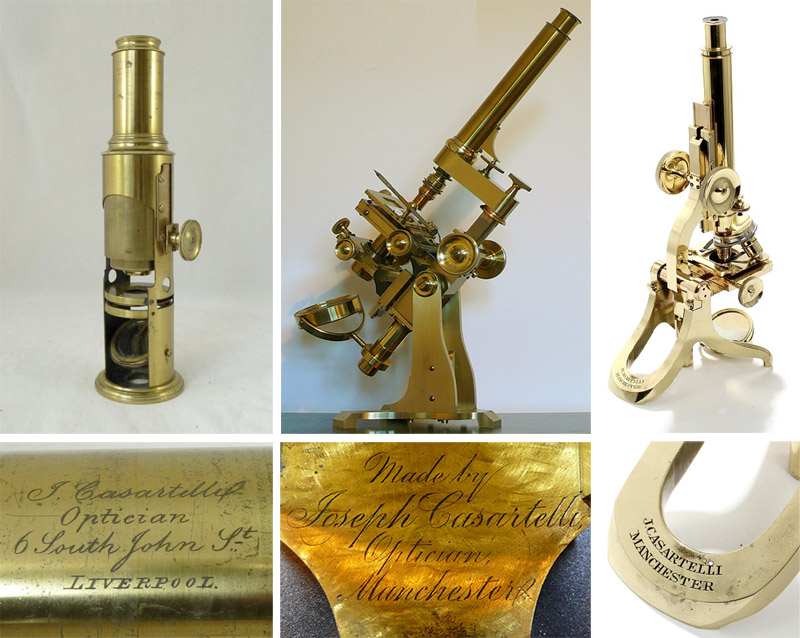
Figure 3.
Microscopes engraved as having been sold by J.L.
Casartelli. A precision glassworker, Casartelli probably manufactured only the
lenses of these instruments. The leftmost “Martin”-style drum microscope is
engraved with Casartelli’s Liverpool address of 6 South John Street, dating it
to ca. 1848-1851. The pattern of the middle instrument is very similar to those
produced by Ross of London. The framework of the rightmost microscope
(unfortunately, stripped and polished in a foolish attempt at “restoration”)
was made in the London by Swift.
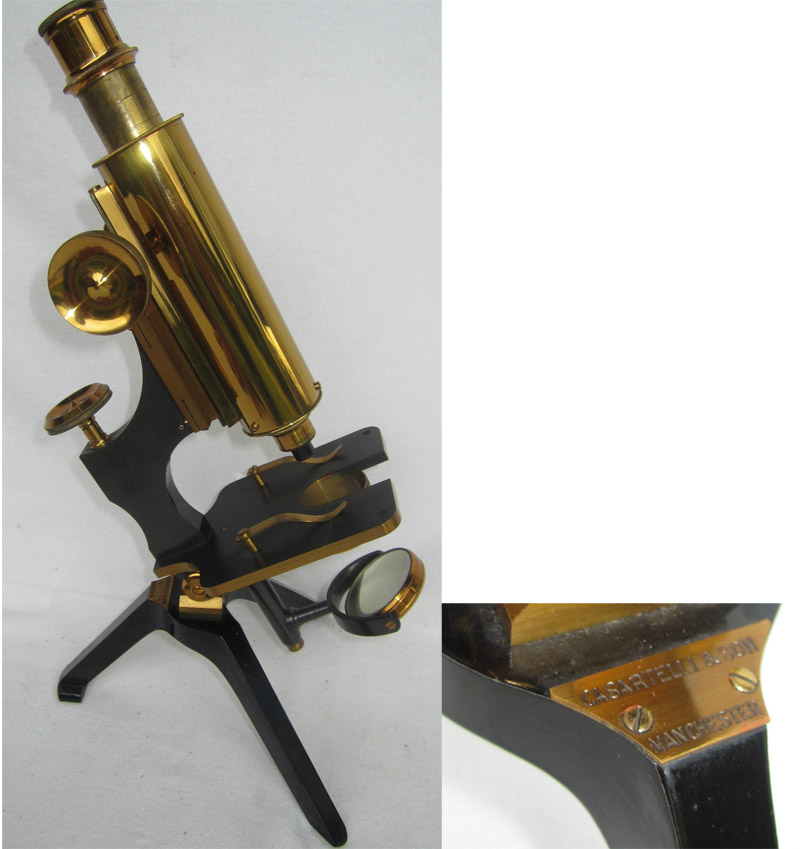
Figure 4.
Both this microscope and its objective lens are labeled by Casartelli and Son, indicating a post-1896 sale date.

Figure 5.
A “linen proofer”, by J.L. Casartelli. Such small,
folding instruments were essential in the clothmaking and selling trades,
enabling magnified examination of fabric thread-counts and quality. Manchester
was a major supplier of linen and other fabrics to the world. This instrument
stands approximately 1 inch (3 cm) high, and folds down to about 1/4 inch (1 cm)
thick, for easy transport in a pocket.

Figure 6.
Larger, higher-precision magnifiers for examination of textiles.
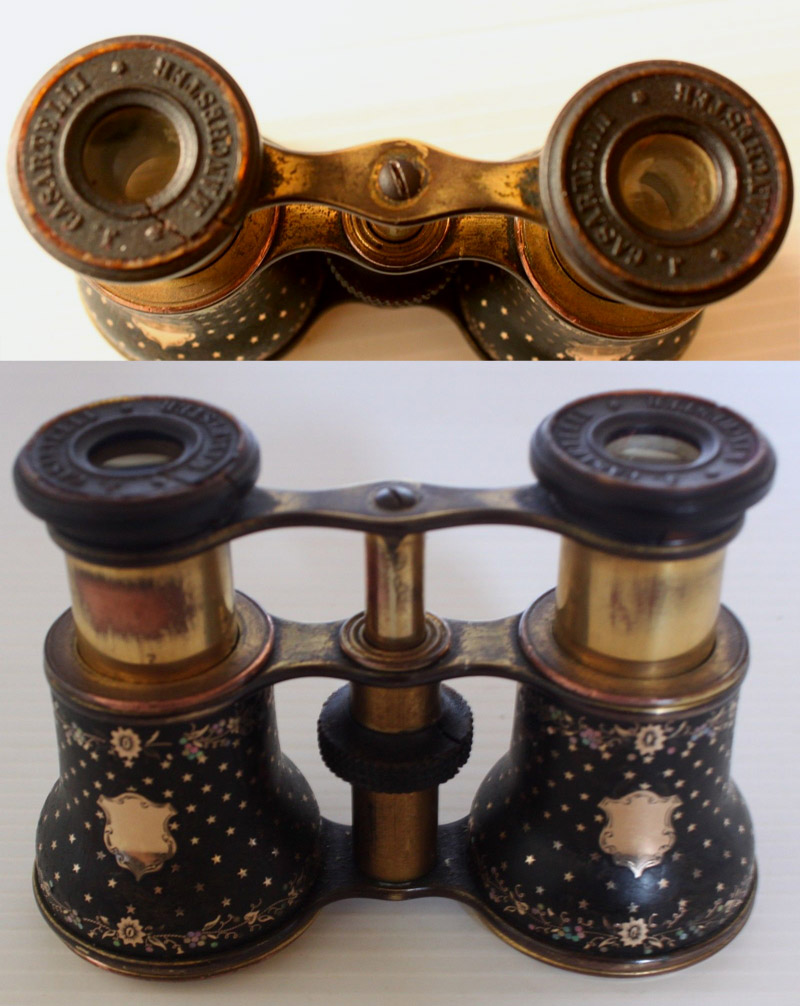
Figure 7.
Opera glasses by J.L. Casartelli.

Figure 8.
A Casartelli telescope.
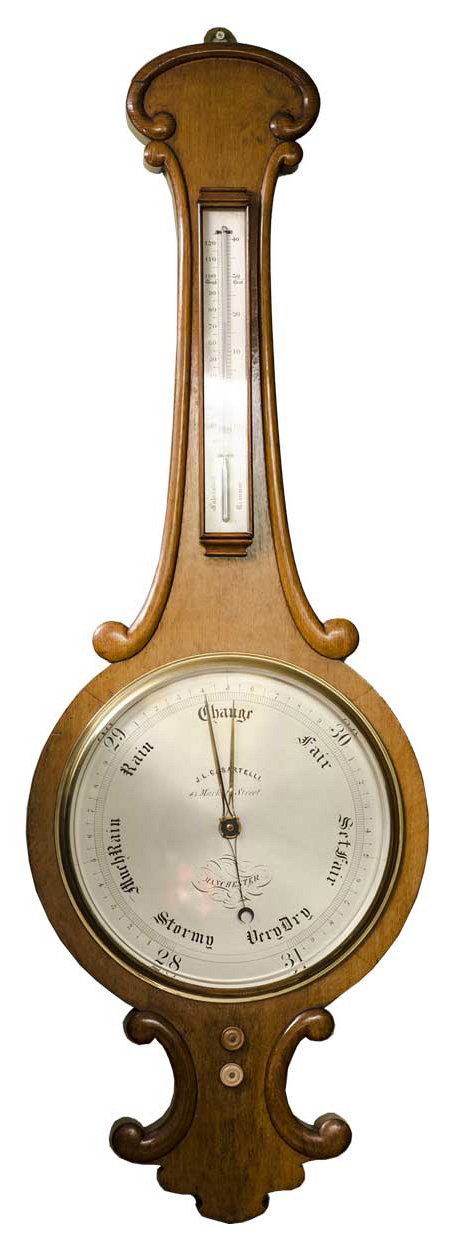
Figure 9.
A barometer by J. Casartelli.
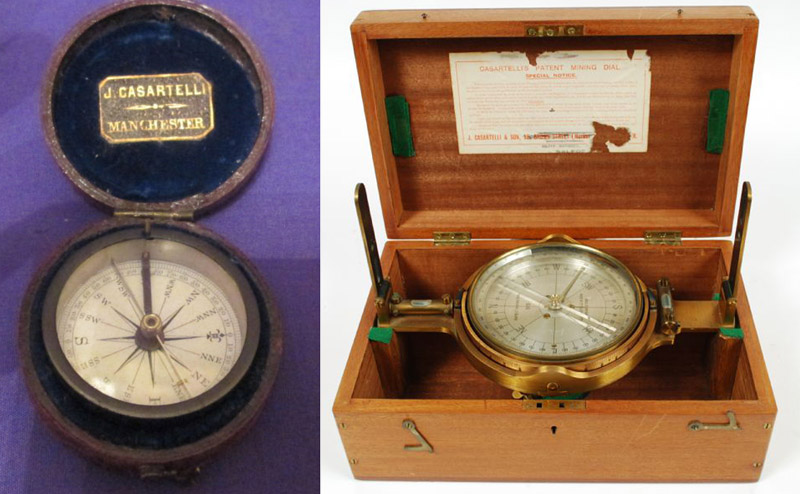
Figure 10.
Two compasses by Casartelli. The left instrument was made for general purposes. The right compass is for use in mines. It is labeled “J. Casartelli and Son”, dating it to after 1896.
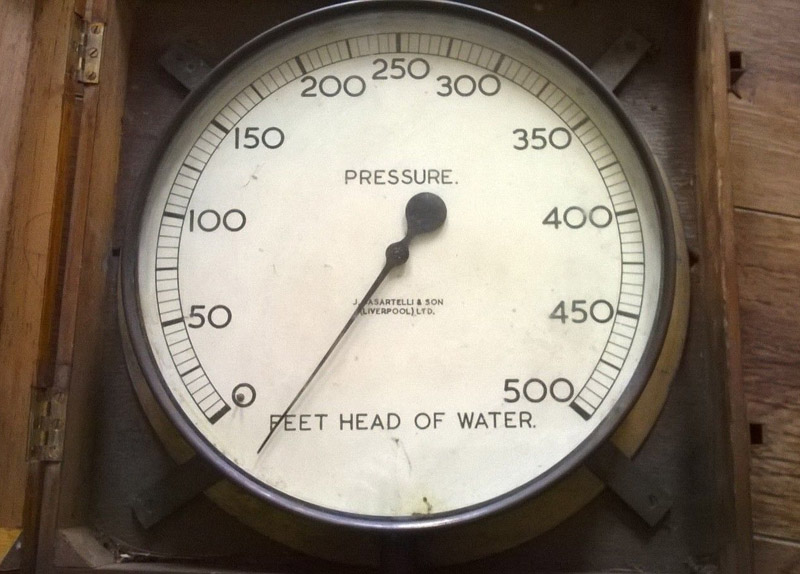
Figure 11.
A Casartelli and Son pressure gauge.
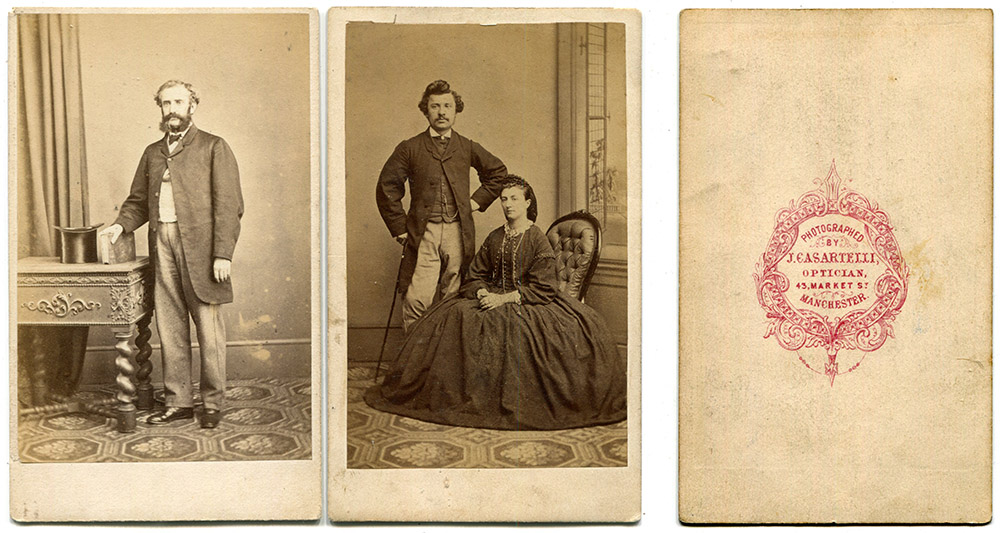
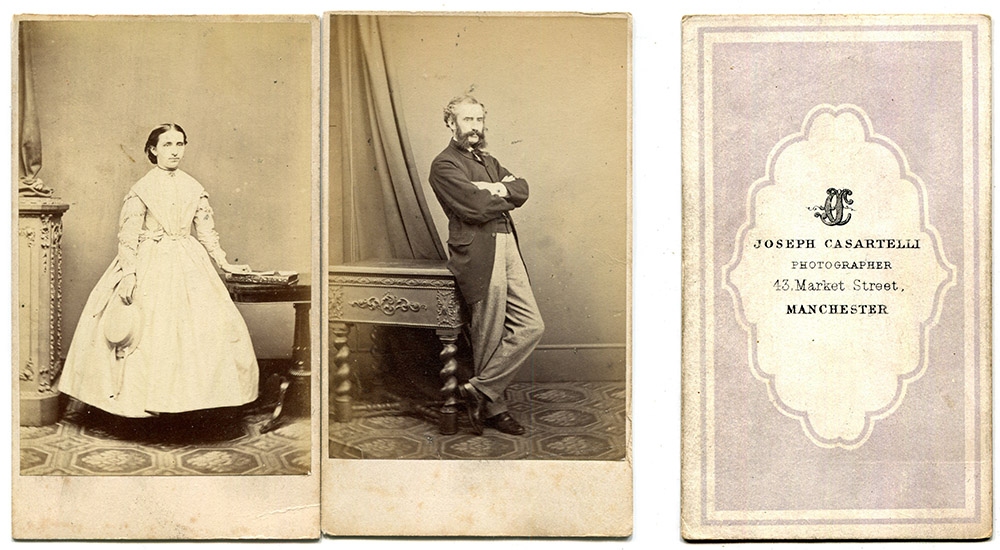
Figure 12.
Four ca. 1860s-70s carte-de-visite (cdv) photographs from J.L. Casartelli.
Guiseppe Luigi Casartelli was born in 1823, in Tavarnerio, Italy, near Lake Como. He emigrated to Liverpool in 1834, and began working as a barometer and thermometer-maker for a relative, Luigi Casartelli (also known as Louis Casartelli). Joseph and his uncle Antonio (Anthony) Casartelli took over Louis’ business during the early 1840s, operating from 20 Duke Street, Liverpool.
Around 1848, Joseph opened his own shop at 6 South John Street, Liverpool. The business at 20 Duke Street was retained by Anthony, along with another of his nephews, named Louis.
During late 1851, Joseph married Jane Henrietta Ronchetti. Her brothers John Baptist and Joshua Ronchetti operated an optician, barometer and scientific instrument business at 43 Market Street, Manchester. Following the marriage, the Manchester business was sold to Joseph Casartelli. He remained at that location for many years. Joseph’s younger brother, Alessandro/Alexander, later joined the business and was recorded as living with Joseph and family in 1861.
The following series of news items and letters-to-the-editor indicate that Casartelli owned a camera capable of producing microscopic-sized photographs and had produced numerous microphotographs during the late 1850s through early 1860s, raising the strong possibility that Joseph L. Casartelli produced the JLC microphotographs. Casartelli also describes that he made microphotographs for only a few years, which could account for the relative scarcity of JLC slides.
The April 17, 1863 edition of The Photographic News included this item about “Eden’s Patent Microscopic Camera”, “A very ingeniously constructed instrument of this character has recently been patented by Mr. A.F. Eden, of Crown Court, Threadneedle Street, the inventor and maker. It is made to serve a variety of purposes, and can be used either for the production of direct miniature portraits suitable for mounting in lockets; for taking reduced copies of photographic pictures to be examined afterwards by the aid of an ordinary microscope; or may be employed inversely for the production of magnified representations of microscopic objects. The instrument may be described as consisting of a photographic camera adapted to the tube or body of an ordinary microscope, and, although the combination serves the purposes already enumerated, the two portions may be disconnected, and each used separately: thus, to the mahogany camera may be adapted a landscape lens of about sixteen inches focus, when it becomes suitable for copying, and for taking small views of any size not exceeding six inches square; likewise the optical portion of the instrument may be mounted on a brass stand, and requires merely an eyepiece to constitute an efficient compound microscope. The manner of using the instrument may be briefly described:-Supposing it be required for taking a micro-photograph or reduction from an ordinary negative, the latter is supported in the position occupied by the ground glass or dark slide in the camera of the usual construction. This end of the instrument is provided with a large plano reflector attached by a hinge, and capable of adjustment to any angle which may be required to direct the rays of the sun or diffused daylight through the negative and axis of the camera; by means of the microscope object glass in front of the camera, a sharply defined image is depicted upon the screen of a little dark box placed a short distance beyond. The lens may be adjusted and focussed by the aid of a rack-work and pinion movement; and when the optical perfection of the image is arrived at, the scratched glass is exchanged for the sensitized plate, in this instance represented by a single drop of collodion upon a glass slide of standard dimensions, one by three inches; the exposure will not usually exceed ten seconds in bright daylight, and the development occupies but a single moment, since it is advisable to guard against too great intensity in the minute photographic reproduction, and in order that the speck of reduced silver on the glass may exhibit, under assisted vision, its proper gradation of light and shade. The beauty of the result, and the rapidity with which the whole process is executed, will possess a charm for those whose leisure moments are few, and whose laboratory facilities are of a limited character. On the other hand, by placing in the little dark box a microscopic object mounted on a glass slide, and removing the cap or stopper which prevents the access of daylight, an enlarged and well-defined image will appear upon the ground glass at the larger end of the camera; having focussed in the same manner as before, this image now presents itself ready to be photographed on merely holding the camera directly pointed to the sun, or reflecting its rays from the small concave mirror placed at this extremity of the instrument. And, further, by removing altogether the larger mirror, the apparatus will be suitable for taking miniature portraits of sizes varying from that of a grain of mustard seed to such as would be mounted in a small locket. The one-inch lens is that preferred for general use, but a lower power is also provided; both of these object glasses have their photographic and optical foci coincident, no allowance need, therefore, be made in the adjustment of the sensitive plate; and the fact that Mr. Eden was for some years a pupil of Mr. Andrew Pritchard is so far a guarantee for the perfection of the optical part of the microscopic camera”.
Joseph Casartelli responded with a letter to the magazine, published on September 25, 1863, “The camera you noticed and engraved in a recent number for taking micro-photographs, was made originally, four or five years ago, by a Mr. Potter (then resident in York, and now in my employ) for Mr. Willis, then of York, and now of Scarborough. Mr. Eden, about four years since, got Mr. Potter to make one for me, which I have still in my possession - Mr. Eden being then in my employ. The mirror has certainly been added since, as also the dark frame at the wide end, but these are the only improvements introduced by Mr. Eden, in every other respect it is like mine. I have written this to you because I think Mr. Potter should have the credit of its construction and arrangement, and as for the ‘patent’, I should have no hesitation in infringing it if any person favoured me with an order, inasmuch as the real inventor would have to make them”.
The following week, Eden wrote, “I notice a communication in last week's Photographic News, from Mr. Casartelli, of Manchester. It is quite true that I engaged Mr. Potter to make a portion of a small instrument for taking minute pictures to be used as microscopic objects, but Mr. Casartelli is well aware that it would not answer for the purpose. One reason was that the chemical and visional foci were not coincident, consequently it would sometimes take hours to adjust. Mr. Casartelli, after many vain and fruitless efforts to produce pictures as good and as cheap as Mr., Dancer's, abandoned its use in despair. My instrument is totally different from the one I and Mr. Potter constructed. The purpose for which I consider mine most useful is taking enlarged microscopic objects. The adjustment is simple and easy, and the chemical and visual foci being coincident, the most inexperienced can use it. If Mr. Casartelli likes to infringe the patent, he is at liberty to do so, as far as I am concerned, as I have sold my interest in it long ago; but I doubt if the gentleman who purchased it would allow him to do so with impunity”.
To which Casartelli immediately responded, “I was prevented noticing Mr. Eden's letter in reply. He admits, clearly, that Mr. Potter first made the instrument he claims as his patent, but adds, that with it I could not produce good pictures - meaning to convey the impression that the instrument was not right for the purpose. The fact is, the instrument did answer admirably, and so long as the collodion I obtained from Mr. Willis was right, I did take good pictures with the greatest ease, and many of them too; but my collodion got wrong, by some means which I could never discover or explain, and then, only, did I meet with difficulty - not in taking them, but in producing a fine deposit of silver, so as not to look coarse under the microscope; and not being sufficiently well versed in photography, nor caring very much about it, I gave up, after several attempts. I have a recent letter in my possession, from Mr. Willis, in which he tells me, that the addition of the mirror and dark frame was suggested to Mr. Eden by himself, when in York”.
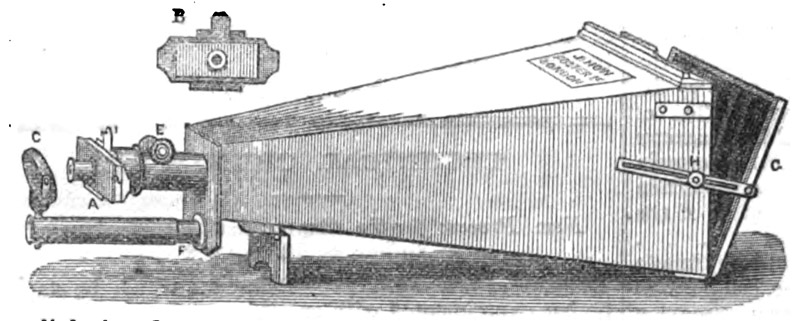
Figure 13.
An 1863 engraving of an “instrument … invented for the purpose of
taking magnified microscopic objects, minute photographs - commonly called
micro-photographs, and miniature photographs from life, for rings, small lockets,
&c.” A patent was claimed by A.F. Eden of London, and the pictured
instrument was manufactured and sold in his behalf by James How. A note in an
1864 issue of ‘The Popular Science Review’ described that “We do not find
anything, however, which we have not seen before, and are disposed to regard it
in some measure as the result of that “patent mania" which has of late
laid hold of our population”. London optician Samuel Highley further declared,
“I think (Eden) might have saved himself the expense of the equivocal advantages
of a patent, for those who know what they are about would certainly never copy
his arrangement or use it with or without his license”. In 1862, Joseph
Casartelli stated that the camera was actually developed several years earlier
by a man in his employ, that Casartelli still owned that instrument, and that he
had made many microphotographs with it over the previous years.
Joseph’s eldest son, Louis Charles, attended college and joined the Catholic clergy, becoming Bishop of Salford in 1903. His other son, Joseph Henry, began working for his father ca. 1882 and, in 1896, was made a partner and the business became “J. Casartelli and Son”. Joseph Louis Casartelli died on March 20, 1900.
The business moved to 18 Brown Street, Manchester in 1922, acquired the Louis Casartelli business of Liverpool in 1929, but was liquidated during the Great Depression in 1933. Parts of the business continued under three distinct ownerships. Surveying and textile instruments were manufactured in Salford under the Casartelli name. The Liverpool business became J. Casartelli & Son (Liverpool), then Casartelli Instruments Ltd. in 1984, which closed in 1989. The remaining parts of the original business became J. Casartelli & Son Ltd., then, in 1939, John Casartelli (M/c) Ltd.
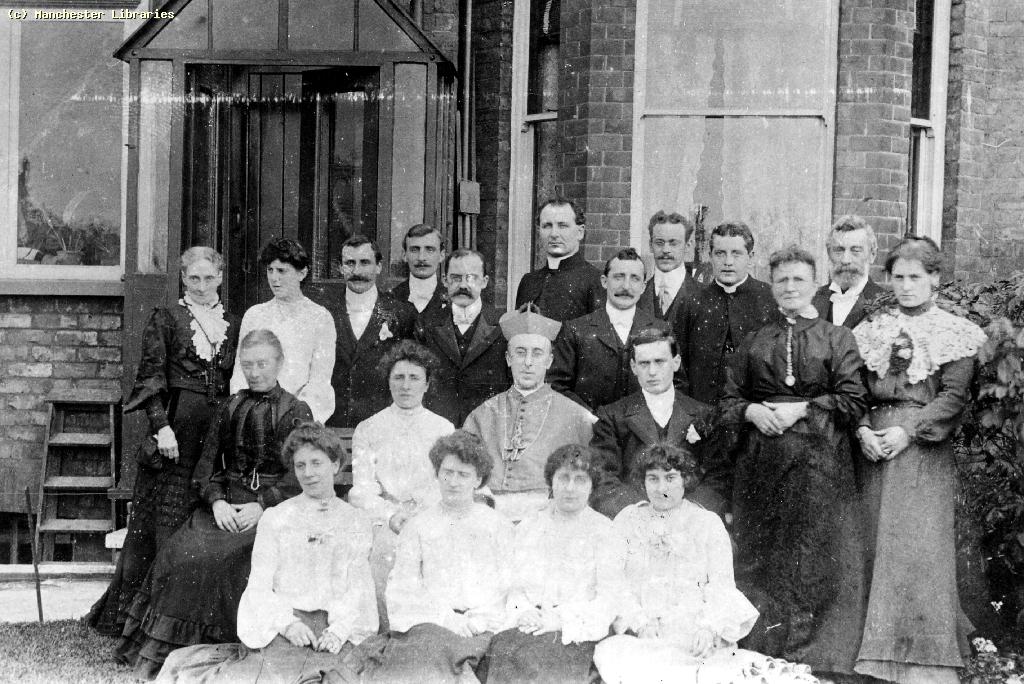
Figure 14.
An 1895 photograph of the Casartelli family. It is not known if Joseph
Louis Casartelli is present in the photograph – he may have been the cameraman.
His eldest son, Louis Charles Casartelli, later Bishop of Salford, is the
seated man in the center wearing religious garb. The bearded, elderly man to
the far right is Josephs’ younger brother, Alessandro (Alexander). Adapted for
nonprofit, educational purposes from the Manchester Libraries Local Images
Collection, http://images.manchester.gov.uk/index.php.
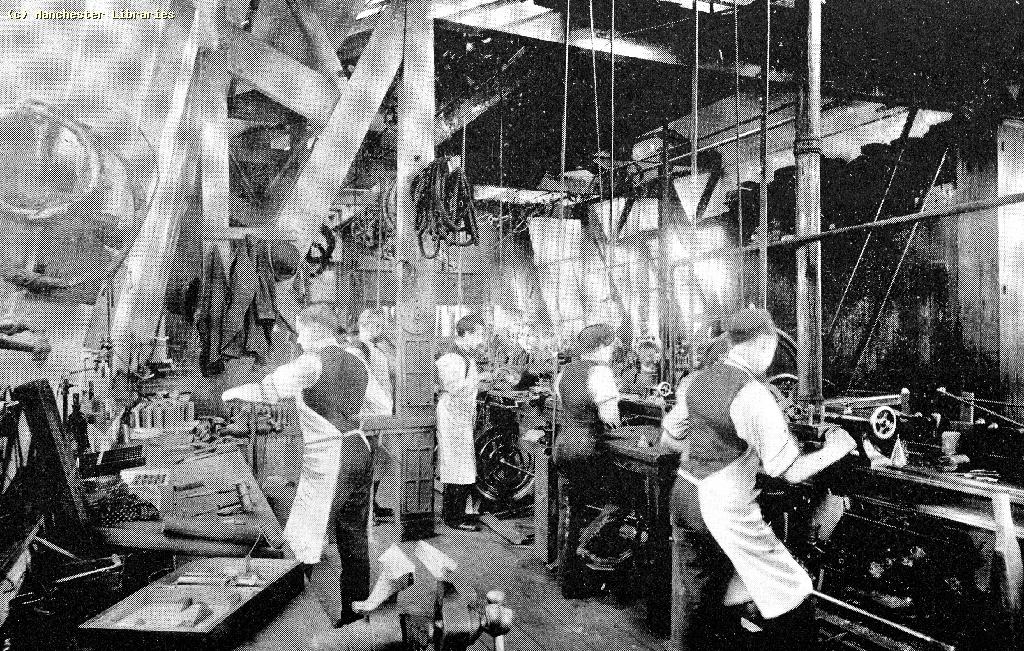
Figure 15.
An 1895 photograph of the Casartelli workshop. Adapted for nonprofit,
educational purposes from the Manchester Libraries Local Images Collection, http://images.manchester.gov.uk/index.php.
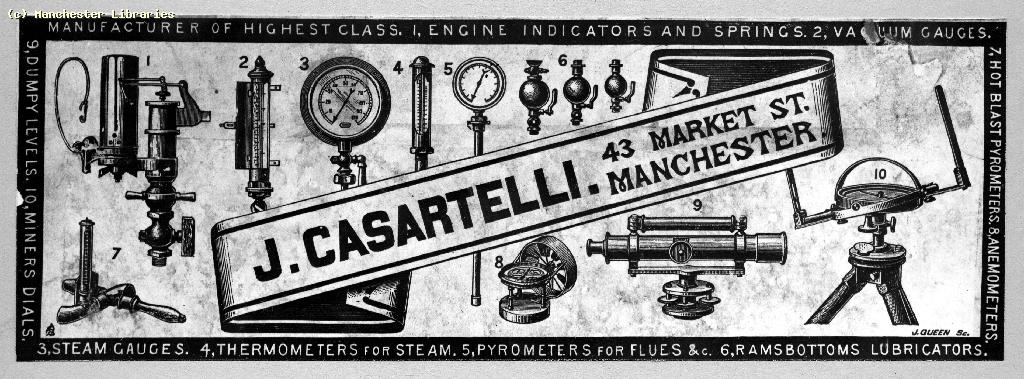
Figure 16.
A circa 1895 advertisement from J. Casartelli. Adapted for nonprofit,
educational purposes from the Manchester Libraries Local Images Collection, http://images.manchester.gov.uk/index.php.
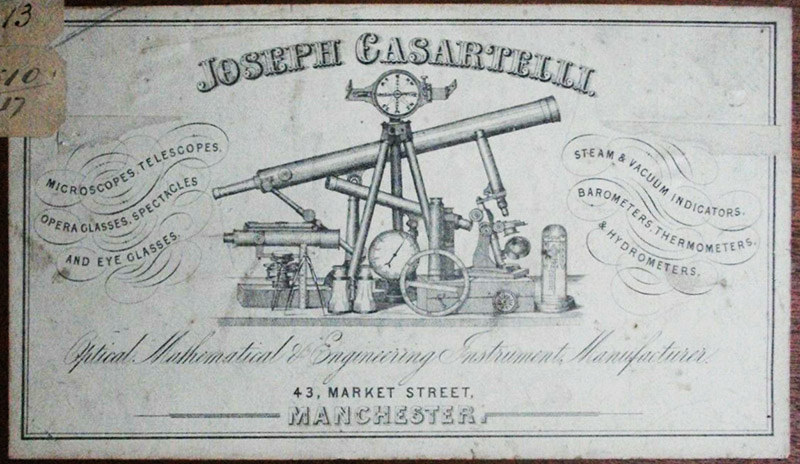
Figure 17.
An undated trade label of J. Casartelli. Adapted for nonprofit, edicational purposes from an internet auction site.
Acknowledgements
Many thanks to the collectors who provided images and insights for this essay. Permission was requested of the Manchester Libraries Local Images Collection to use images for this nonprofit, educational purpose.
Resources
Casartelli, Joseph (1863) Letter: Eden’s microscopic camera, The Photographic News, Vol. 7, page 467
Casartelli, Joseph (1863) Letter: Microscopic camera, The Photographic News, Vol. 7, page 503
Chemical News (1863) Eden’s patent microscopic camera, by James How, Vol. 8, page 66
Eden, A.F. (1863) Letter: Eden’s microscopic camera, The Photographic News, Vol. 7, page 478
England census, marriage and death records, accessed through ancestry.co.uk
Highley, Samuel (1863) Letter: Eden’s “patent” microscopic camera, Chemical News, Vol. 8, page 84 (correction on page 96)
Journal of the Society of Arts (1851) Patent Awarded: “Joseph Louis Casartelli, Manchester, and Anthony Casartelli and Louis Casartelli, Liverpool - Certain improved apparatus for ascertaining the density of water in marine steam boilers or generators, for the purpose of preventing saline encrustation”.
Kelly’s Directory of the Watch & Clock Trades (1880) Opticians, retail: Casartelli Anthony, 4e St. John's lane & 54 Oldhall st. Liverpool; Casartelli Jsph. Louis, 43 Market st. Manchester; Casartelli Louis, 20 Duke st. Liverpool
Manchester Libraries Local Images Collection (accessed June, 2014) Permission for use requested, http://images.manchester.gov.uk/index.php
Manchester Memoirs (1990) Joseph Casartelli, Vol. 130, pages 63-66
Museum of Science & Industry Collections Department (2001) The Ronchetti Family, http://www.mosi.org.uk/media/33871458/theronchettifamily.pdf
Official Catalogue of the Industrial Department, International Exhibition of 1862 (1862) “2873 Casartelli, J. 43, Market-st. Manchester – Microscopes, telescopes, mining and surveying instruments”, page 46
The Photographic News (1863) Eden’s patent microscopic camera, Vol. 7, pages 187-188
The Popular Science Review (1864) Patent microscopic camera, Vol. 3, page 133
Slater’s National Commercial Directory of Ireland ... Classified Directories of the Important English Towns of Manchester, Liverpool ... (1846) Barometer and Thermometer Makers: Casartelli A. & J. 20 Duke St.
Slater’s Directory of Lancashire (1848) Opticians and Mathematical Instrument Makers: Casartelli, A. & J. 20 Duke St.
Walker, Ian (2007) An Early Victorian Microscope by Joseph Casartelli, Manchester, Micscape, http://www.microscopy-uk.org.uk/mag/artoct07/iw-Casartelli.html
Whellan
and Company’s Directory of Manchester (1852) Joseph Casartelli, 43
Market St.